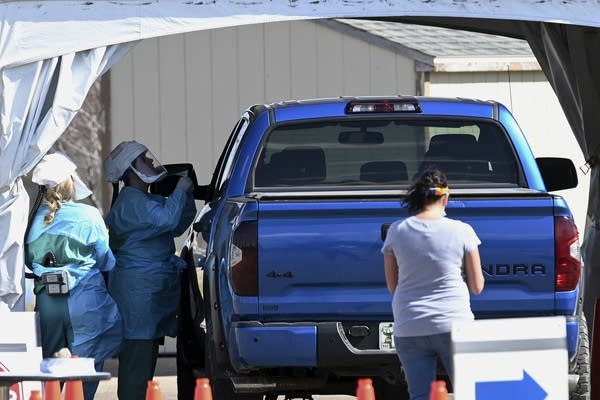April 21 update on COVID-19 in MN: 160 deaths, most tied to long-term care

Medical workers administer drive-up COVID-19 tests outside the Sanford Worthington Clinic in Worthington, Minn., on Saturday.
Aaron Lavinsky | Star Tribune via AP
Go Deeper.
Create an account or log in to save stories.
Like this?
Thanks for liking this story! We have added it to a list of your favorite stories.


